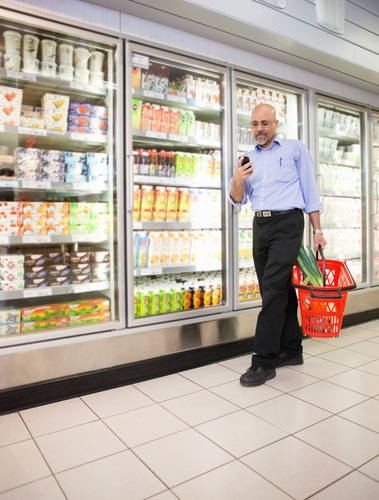
E-Commerce retailers are known for using sophisticated analytics to glean customer behavior. But most people don’t know it’s possible to get similar insights in physical stores. Software Advice, a company that researches and reviews retail software systems, recently published a report about mobile-enabled foot traffic analytics that examines how brick-and-mortar retailers are using data from smartphone signals to increase sales.
In the following Q&A, Software Advice’s retail analyst, Janna Finch, tells Retail TouchPoints about how retailers can benefit from mobile-enabled foot traffic technology.
Retail TouchPoints (RTP): What are the potential benefits of mobile-enabled foot traffic technology? How does it improve business processes, marketing strategies, assortment and merchandising?
Finch: The benefits include insight into location-based peak traffic patterns, conversion rates and dwell times, which can help retailers improve their displays and boost sales. I think that what The Cellular Connection is doing in their stores right now is quite innovative and speaks to the benefits of this technology. The retailer A/B tests how a product’s placement inside the store impacts sales and found that moving high-margin merchandise — like phone chargers — to the front of the store increased sales of those items. Instead of looking only at transaction numbers, retailers can triangulate sales to customer behavior, and then make adjustments to optimize their store layout, merchandising and marketing strategies.
RTP: In what ways can mobile-enabled foot traffic technology improve the customer experience?
Finch: It’s more powerful than traditional technology because it accurately records customer paths, dwell times and wait times. That data can be compared to transaction data for insights on how to improve the shopping experience. For example, when a retailer notices a significant increase in wait times after lunch on a Tuesday, staffing can be adjusted to help reduce wait time so customers visiting the store at that time won’t have to wait so long.
RTP: How does mobile-enabled foot traffic technology help retailers create more relevant and personalized brick-and-mortar experiences?
Finch: Unlike e-Commerce retailers, brick-and-mortar retailers have very little insight about what interests consumers as they’re shopping at any given moment. With mobile-enabled technology, it’s now possible to personalize in-store marketing. Retailers can automatically send personalized messages and offers that are relevant to shoppers who are opted-in to their app based on their location in a store.
RTP: Should retailers pair foot traffic technology with any other mobile or in-store solutions to optimize the customer experience?
Finch: Mobile-enabled foot traffic technology can be combined with other technology to give retailers a complete view of how their customers shop so they can further personalize the experience. For example, the State of Vermont Welcome Centers integrated this technology with their digital advertising displays. Using dwell time and visitor traffic pattern data, the centers were able to optimize advertising and increased overall dwell times from six to 15 minutes.
RTP: What questions should retailers ask when researching potential solutions?
Finch: In 2014, the capabilities and number of retailers who use mobile-enabled foot traffic technology will only increase. If you can measure it, you can improve it, and this technology delivers actionable data retailers can use to improve shopper satisfaction and increase sales. For smaller retailers, budget and the complexity of the software will be big factors when evaluating options. Fortunately, mobile-enabled foot traffic analytics isn’t just for the big guys. There are many affordable solutions that don’t require an in-house IT team to implement or a data scientist to analyze.
Has your retail organization invested in mobile-enabled foot traffic technology? Do you think these solutions are beneficial? Share your thoughts in the comments section below!






